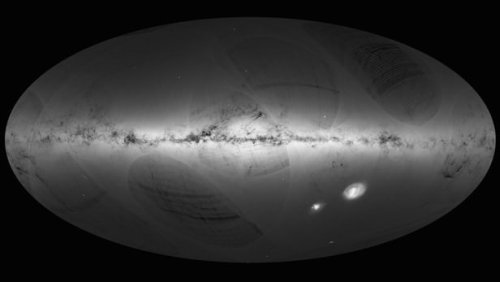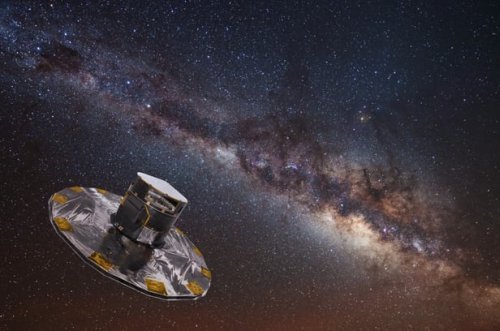Created the most detailed map of the Milky Way, which contains data on more than one billion stars

The European Space Agency (ESA) has published a new huge star catalog, which presents detailed data on the exact location and brightness of more than a billion stars that make up our galaxy, the Milky Way galaxy. This directory is based on data collected by the space telescope Gaia. It is the largest and most detailed map of the Milky Way today, however, this is - just an intermediate step of creating an even more extensive maps, which is the ultimate goal of Gaia mission.

The new map shows the data collected by the unique camera Gaia telescope for the first 14-month period of work, which was completed in September this year. data processing and to bring to the task an easy to use mind was performed community Gaia Data Processing and Analysis Consortium (DPAC) which includes approximately 450 professionals and programmers from 20 different countries.
This group of highly skilled professionals has created a resource that allows you to extract data from the database, which contains records of 1142 millions of stars. In this case, the location data and the brightness of each star is accurate twice superior accuracy of data like any other folder. And anyone can use the data, visualized and presented in the public domain and in an easy to use form on Gaia telescope page.

At the moment in the catalog provided a detailed view of the data on about 2 million stars, in addition, the catalog integrates the data collected during the 1997 review Hipparcos and Tycho-2 catalog. This combination allows you to track the movement of the stars and more accurately estimate their distance from Earth. Analysis of the vast array of information gathered by the telescope of Gaia, allowed us to determine the exact distance, distribution and motion parameters 400 clusters, which are located at a distance of 4800 light years from Earth. And as further data processing is the number will continue to increase, and increasing scientific value created directory.
In addition to high-precision "mapping" of the Milky Way, Gaia telescope's capabilities allow the study of atmospheres of planets in our solar system. The data set obtained in July this year, the researchers found evidence of subtle and rarefied atmosphere of Pluto, and these results were obtained because Pluto was passing between the Earth and a distant star, which is being watched while "watchful eye" of the telescope Gaia .
you can also look at a map of the Milky Way
http://gea.esac.esa.int/visualization/index.html
Your article is a google translation of this original article. Not properly citing his/her source is a very bad practice. Moreover, google translations of any article will not bring much to the steemit platform. It is better to give a link to your sources and explain why you have liked the original article (i.e. starting a discussion).
Not citing sources of copied works is plagiarism and frowned upon by the community.
Sharing content and add value by:
Repeated plagiarized posts are considered spam. Spam is discouraged by the community, and may result in action from the cheetah bot.
Creative Commons: If you are posting content under a Creative Commons license, please attribute and link according to the specific license. If you are posting content under CC0 or Public Domain please consider noting that at the end of your post.
Not indicating that the content you copy/paste is not your original work could be seen as plagiarism.
If you are actually the original author, please do reply to let us know!
Thank You!
yes I know it's not the original article
I will try to bring in new articles its opinion
thank you very much for the hint